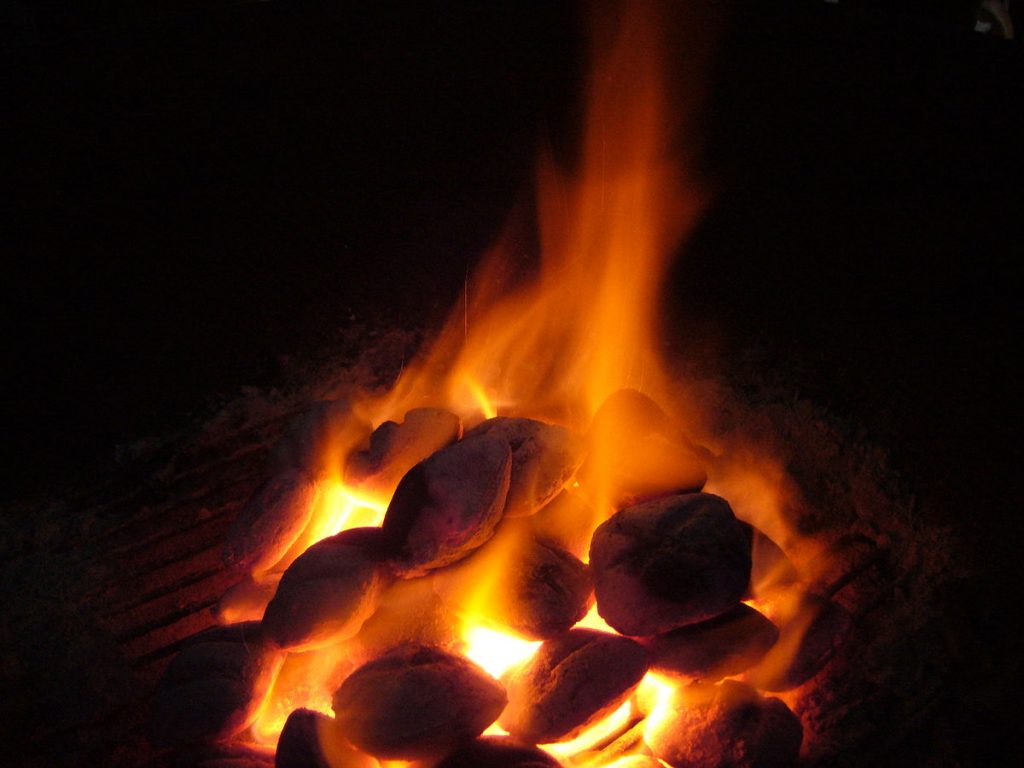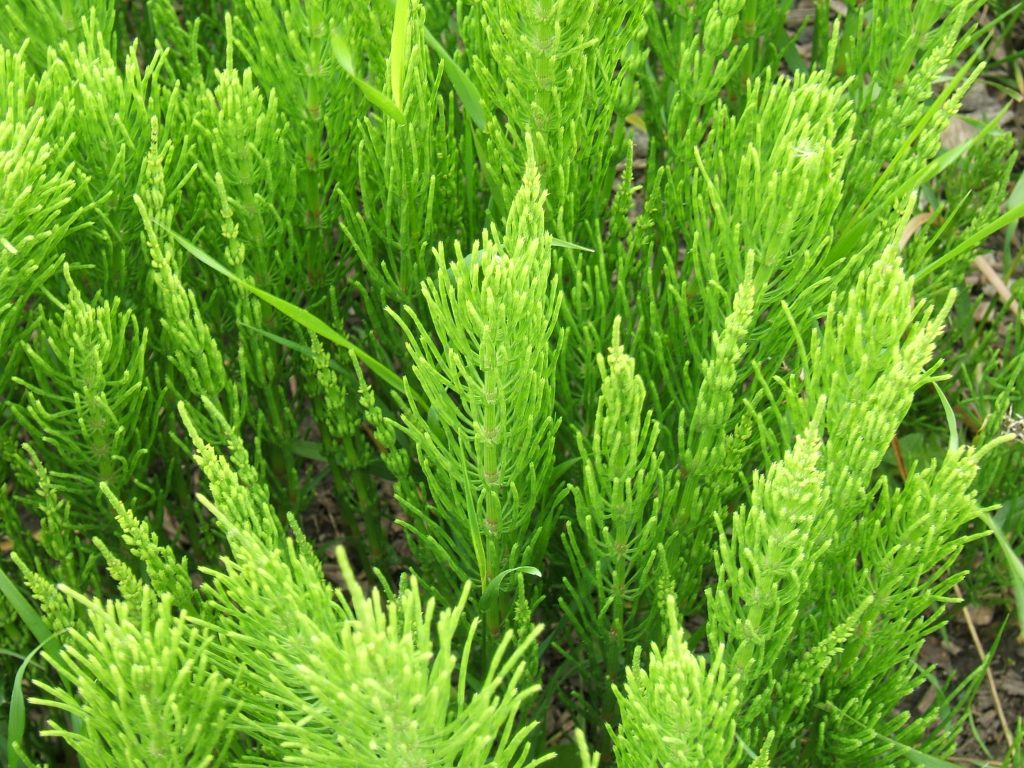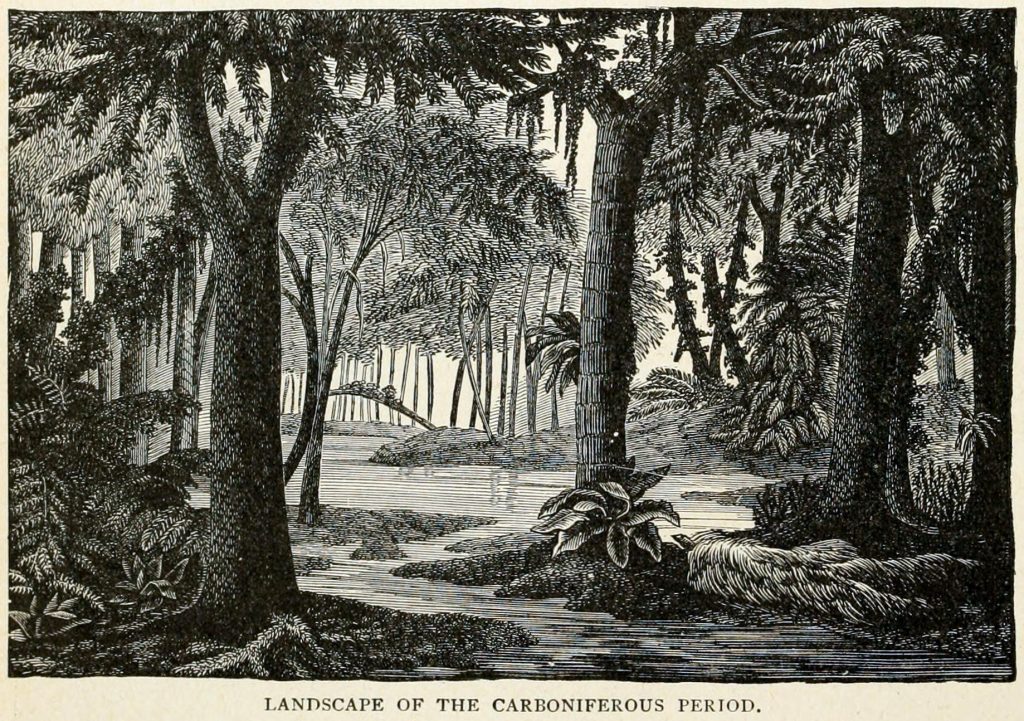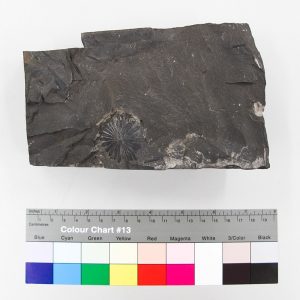By Claire Smith

Coal is formed from dead and only partially decayed plant material. Essentially it is peat that has been subjected to heat and high pressure changing it from the soft brown material widely used in gardening into the hard black coal.
Fossil plants
Reading University Herbarium holds both specimens and photographs of fossil plants:
- Lepidodendron fossil in coal
- Teaching slide of Lepidodendron
These two are examples of Lepidodendron, a plant fossil commonly found in carboniferous rocks. Known as the ‘scale tree’, the diamond shapes are in fact scars left by the shedding of leaves as the plant grew.
- Annularia in coal
- One of the old teaching slides for fossil plants
A horse tail
This specimen and photograph are examples of Annularia, which are the leaves of Calamites. Abundant in coal deposits, its closest living relative is Equisetum or Horsetail. (You may already be familiar with Equisetum arvense, which can be particularly invasive.)

A history of the world
But what did the plants of the carboniferous era actually look like? There are plenty of artistic interpretations, like the one below which is part of Ridpath’s “History of the World”, published in New York in 1897. The complete book is available to view online – this image is on page 86.

Museums around the world also have dioramas to show accurate depictions of various types of habitat, often predominantly featuring animals, but the plants play a vitally important part of these depictions too. The American Museum of Natural History, perhaps the most famous home of the museum diorama, has a hall dedicated to North American Forests – albeit modern ones. The Field Museum in Chicago have a carboniferous period diorama, of which this National Geographic article includes a photograph.

The diorama above is at the Ruhr Museum in Germany, part of the Zollverein Coal Mine Industrial Complex, which is now a UNESCO World Heritage Site. This is probably one of the best places in Europe to learn about coal all the way from its prehistoric origins right through to its modern industrial history.
Coal in society
Coal has been recognised and an important combustable material for milennia and is mentioned by Theophrastus in his treatise On Stones (Περὶ λίθων) written in the 4th century BC. It has been a key part of global industrialisation but the impact on climate through the release of CO2 and the gradual depletion of global coal reserves means it’s use is now being phased out.
So, if you get coal in your Christmas stocking, rather than a satsuma, think about the 250-350 million years of history your are holding and promise to be better behaved next year.
For more AdventBotany 2020 see the index page.




